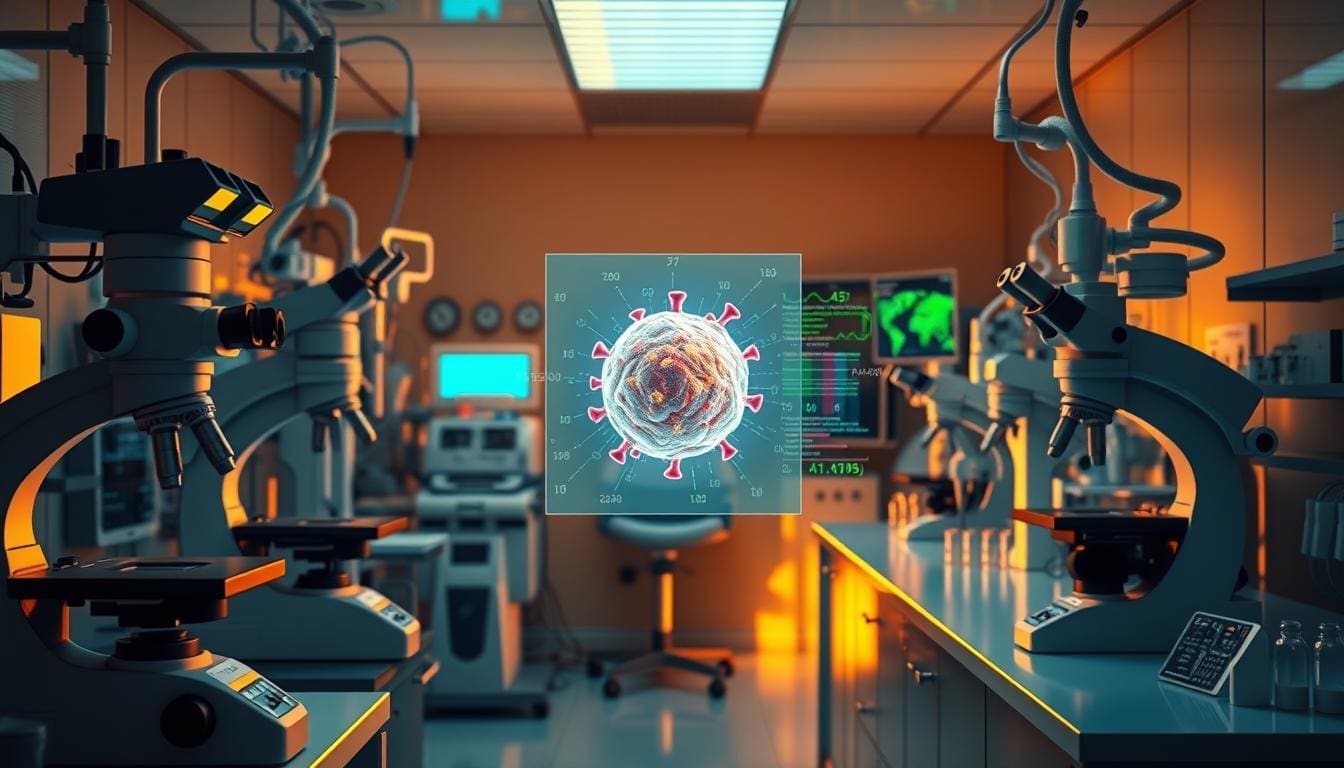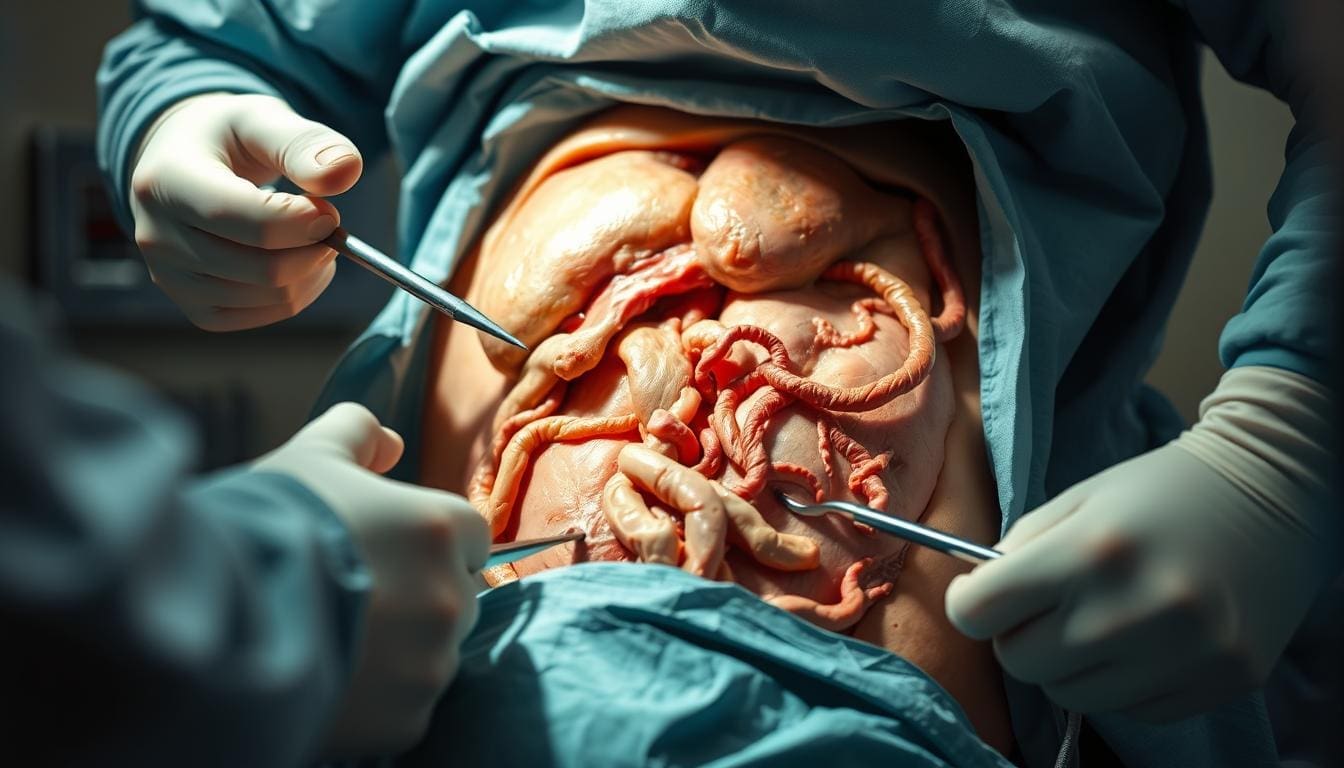Last Updated on November 26, 2025 by Bilal Hasdemir

At Liv Hospital, we know that a cancer diagnosis can feel overwhelming. Finding the right treatment can be tough. Adjuvant therapy is key in cancer treatment. It helps get rid of tiny cancer cells left behind, lowering the chance of cancer coming back.
We’re dedicated to top-notch healthcare, supporting patients from around the world. Our team of experts works together to give our patients the best treatments. Adjuvant therapy is extra treatment given after the first treatment to make it more effective and lower the risk of cancer coming back.
Key Takeaways
- Adjuvant therapy is a vital part of cancer treatment.
- It helps get rid of tiny cancer cells, lowering the risk of cancer coming back.
- Liv Hospital offers world-class healthcare with full support for international patients.
- Our team of experts works together to ensure effective treatments.
- Adjuvant therapy makes treatments more effective and lowers the risk of cancer coming back.
Understanding Adjuvant Therapy in Cancer Treatment
Adjuvant therapy is a key part of cancer treatment. It works alongside primary therapy to fight cancer. We’ll dive into what adjuvant therapy is, its role in cancer care, and how it’s different from primary treatment.
The Role of Adjuvant Therapy in Oncology
Adjuvant therapy is given after the main treatment to get rid of any cancer cells left behind. It aims to lower the chance of cancer coming back, helping patients do better.
The main goal of adjuvant therapy is to target tiny cancer cells that could cause a relapse. Knowing about adjuvant therapy helps patients see the full picture of their cancer treatment.
Difference Between Primary and Adjuvant Treatment
Primary treatment, like surgery, is the first step in fighting cancer. Adjuvant therapy, by contrast, is given after primary treatment to cut down recurrence risk. The main difference is when and why they’re used in treatment.
- Primary treatment tries to remove or kill the main tumor.
- Adjuvant therapy goes after any leftover cancer cells to stop them from coming back.
It’s important for patients to know the difference between primary and adjuvant treatment. By using both, we can offer a more complete treatment plan. This boosts the chances of a good outcome.
The Purpose and Goals of Adjuvant Cancer Therapy
Understanding adjuvant cancer therapy helps patients see the full scope of cancer treatment. It’s a key part of cancer care, aimed at getting rid of any cancer cells left after the first treatment.
Adjuvant therapy has several main goals. It targets tiny cancer cells left after surgery or other treatments. By getting rid of these cells, it lowers the chance of cancer coming back.
Eliminating Microscopic Residual Disease
Microscopic residual disease means tiny cancer cells that tests can’t find. These cells can cause cancer to come back if not treated. Adjuvant therapy is made to find and kill these cells, stopping cancer from returning.
Reducing the Risk of Cancer Recurrence
Cancer coming back is a big worry for those who’ve had treatment. Adjuvant therapy is key in lowering this risk by treating any remaining cancer cells. This boosts survival chances and improves life quality for cancer patients.
| Therapy Type | Purpose | Benefits |
|---|---|---|
| Chemotherapy | Kill remaining cancer cells | Reduces recurrence risk, improves survival |
| Radiation Therapy | Target localized cancer cells | Reduces local recurrence, improves survival |
| Hormone Therapy | Block hormone-sensitive cancer cells | Reduces recurrence risk, improves survival in hormone-sensitive cancers |
Improving Overall Survival Rates
Adjuvant therapy gets rid of tiny cancer cells and lowers the chance of cancer coming back. This makes overall survival rates for cancer patients better. Adding adjuvant therapy to treatment plans has led to better results for patients.
Examples of adjuvant therapies include chemotherapy, radiation therapy, and hormone therapy. Each is chosen based on the patient’s cancer type and stage.
When Is Adjuvant Therapy Recommended?
Adjuvant therapy is used to help primary treatments work better. It’s given to patients with certain types of cancer. The choice depends on the cancer’s stage and how it behaves.
Cancer Types Commonly Treated with Adjuvant Therapy
Adjuvant therapy is often used for breast, colon, and lung cancer. The treatment plan is based on the cancer’s stage and type. For example, in breast cancer, treatments like chemotherapy or hormone therapy might be used.
Patient Selection Criteria
Choosing who gets adjuvant therapy involves looking at several factors. These include the extent of disease, overall health, and specific tumor characteristics. Our team carefully considers these to create the best treatment plan for each patient.
What Is Adjunctive Therapy in Oncology: A Comprehensive Definition
Adjunctive therapy is a term often used in oncology. It means treatments given along with the main therapy. It’s key for patients to understand this when choosing their treatments.
Terminology: Adjuvant vs. Adjunctive vs. Adjunct Therapy
The terms adjuvant, adjunctive, and adjunct therapy are used a lot in oncology. Adjuvant therapy is treatments after the main therapy to lower cancer coming back. Adjunctive therapy is used to help or add to the main treatment.
A leading oncologist explains, “Adjuvant therapy aims to get rid of any cancer left after the main treatment. Adjunctive therapy supports the main treatment.”
“The goal of adjunctive therapy is to make the main treatment work better. This improves patient outcomes and quality of life.”
The Adjuvant Setting Explained
The adjuvant setting uses therapies to target any cancer left after the main treatment. This is key to better outcomes for cancer patients.
| Therapy Type | Purpose | Application |
|---|---|---|
| Adjuvant Therapy | Eliminate residual cancer cells | After primary treatment |
| Adjunctive Therapy | Support primary treatment | Alongside primary treatment |
Historical Development of Adjuvant Approaches
The idea of adjuvant therapy has grown a lot over time. Advances in tech and understanding cancer have helped. Early therapies were not as effective, but today’s methods show great promise.
Research keeps going to make adjuvant and adjunctive therapies better. The goal is to improve treatment and care for patients.
Types of Adjuvant Therapy for Cancer Patients
Adjuvant therapy in oncology includes many treatments to help patients. At our institution, we focus on customizing therapy for each patient’s needs.
Adjuvant Chemotherapy
Adjuvant chemotherapy uses drugs to kill cancer cells left after primary treatment. It’s very effective for cancers at high risk of coming back.
Adjuvant Radiation Therapy
Adjuvant radiation therapy uses high-energy rays to kill cancer cells. It’s often used with surgery to lower the chance of cancer coming back.
Hormone Therapy as Adjuvant Treatment
For hormone-sensitive cancers, hormone therapy blocks hormones that help cancer grow. It’s often used in breast and prostate cancer treatment.
Immunotherapy in the Adjuvant Setting
Immunotherapy uses the body’s immune system to fight cancer. It’s becoming more common in adjuvant treatment and has shown great promise.
Knowing about the different adjuvant therapies helps us create better treatment plans. This way, we can improve each patient’s chances of a successful outcome.
Adjuvant Chemotherapy: Protocols and Administration
Adjuvant chemotherapy is key in cancer treatment. It targets tiny cancer cells left after surgery or radiation. The aim is to get rid of these cells, cutting down cancer coming back and boosting survival chances.
Common Drug Regimens
Adjuvant chemotherapy plans change based on cancer type, patient health, and treatment goals. Common plans include:
- Anthracycline-based regimens for breast cancer and other cancers.
- Platinum-based regimens for ovarian, lung, and other cancers.
- Taxane-based regimens for breast, ovarian, and lung cancers.
These plans might be used alone or together, based on cancer type and stage. For more on first-line treatments for cancer, check Liv Hospital’s guide on first-line treatment for.
Duration and Scheduling
How long and when adjuvant chemotherapy is given depends on the patient and cancer type. Treatment can last from a few months to years. It involves cycles of chemotherapy with breaks in between.
Delivery Methods
Adjuvant chemotherapy can be given in different ways, including:
- Intravenous (IV) chemotherapy: Drugs go straight into a vein.
- Oral chemotherapy: Medications are taken by mouth.
- Intraperitoneal (IP) chemotherapy: Drugs are put directly into the belly.
Dose Intensity and Density Considerations
Dose intensity and density are key in adjuvant chemotherapy. The goal is to give the right amount of chemotherapy quickly to be effective yet gentle on the body. Adjustments might be made based on how well the patient does.
Knowing about adjuvant chemotherapy helps patients and doctors create effective treatment plans. This improves outcomes and quality of life.
Adjuvant Radiation Therapy: Techniques and Applications
Adjuvant radiation therapy is a key treatment that has greatly improved cancer care. It uses radiation to kill any cancer cells left after the first treatment. This helps lower the chance of cancer coming back.
External Beam Radiation
External beam radiation sends high-energy beams from outside the body to the tumor. It targets cancer cells well while protecting healthy tissues nearby.
Brachytherapy
Brachytherapy places a radioactive source close to or inside the tumor. It gives a strong dose of radiation to the tumor, but less to other tissues.
Treatment Planning and Delivery
Good treatment planning and delivery are key for adjuvant radiation therapy success. We use top-notch imaging and software to plan each treatment. This ensures the radiation dose is just right for each patient.
Key Considerations in Treatment Planning
- Precision: Making sure the tumor is targeted accurately.
- Dose Optimization: Giving the tumor the most radiation while protecting healthy tissues.
- Personalization: Making the treatment plan fit the patient’s unique needs.
Hypofractionation and Accelerated Approaches
Hypofractionation and accelerated radiation therapy are new ways to treat cancer. They give higher doses of radiation in a shorter time. These methods can make treatment more effective and shorter.
Thanks to these advanced techniques, adjuvant radiation therapy is a vital part of cancer treatment. It helps patients get better outcomes and enjoy a better quality of life.
Decision-Making Process for Adjuvant Therapy
Deciding on adjuvant therapy is a detailed process. It involves a team of healthcare experts. This team is key in finding the best treatment for cancer patients.
Multidisciplinary Tumor Board Approach
A multidisciplinary tumor board is a team effort. It includes specialists from different fields talking about patient cases. This way, all parts of a patient’s health are looked at, leading to better care.
The team usually has oncologists, surgeons, radiologists, and pathologists. They all work together.
Risk Assessment Tools
Risk assessment tools figure out how likely cancer will come back. They look at the tumor, the patient’s health, and genetic markers. This helps doctors decide if adjuvant therapy is needed.
Shared Decision-Making with Patients
Shared decision-making means patients get to help decide. Doctors consider what the patient wants and values. This way, treatment plans better match the patient’s needs and wishes.
This approach also makes patients feel more in charge of their care.
Weighing Benefits Against Risks
It’s important to think about the benefits of adjuvant therapy and its risks. Doctors look at side effects, how it affects quality of life, and if it lowers cancer risk. By looking at these things, patients and doctors can make smart choices about adjuvant therapy.
Side Effects and Management of Adjuvant Cancer Treatments
Managing side effects is key in adjuvant cancer treatment. It affects patients’ quality of life. Adjuvant therapies help lower cancer recurrence risk but can cause side effects.
Common Side Effects by Treatment Type
Adjuvant treatments have different side effects. For example, adjuvant chemotherapy can lead to fatigue, nausea, and hair loss. Adjuvant radiation therapy may cause skin irritation and fatigue in the treated area. Knowing these side effects helps manage them better.
At Liv Hospital, we understand each patient’s experience with adjuvant therapy is unique. We provide personalized care to lessen these side effects.
Strategies for Side Effect Management
Managing side effects is vital to keep patients’ quality of life high during adjuvant therapy. We use several strategies:
- Medications to reduce symptoms like nausea and pain
- Lifestyle changes, such as diet and exercise
- Supportive care, like counseling and physical therapy
These strategies help patients better tolerate adjuvant treatments.
Long-term Effects and Monitoring
Adjuvant therapy can have long-term effects like cardiovascular issues and secondary cancers. It’s important to monitor and follow up to catch and manage these effects early.
Our team stresses the need for long-term follow-up. We aim to address any late effects of adjuvant therapy, ensuring complete care throughout the patient’s journey.
Impact on Quality of Life
Adjuvant therapy can significantly affect a patient’s quality of life. But, with proper side effect management and supportive care, many patients can maintain a good quality of life during and after treatment.
We support our patients from diagnosis to recovery. Our goal is to ensure the best possible outcomes for them.
Neoadjuvant vs. Adjuvant Therapy: Understanding the Differences
Understanding the difference between neoadjuvant and adjuvant therapy is key in cancer treatment. Both therapies are important but work at different times and in different ways.
Timing in the Treatment Sequence
Neoadjuvant therapy is given before the main treatment, like surgery. It aims to shrink tumors, making them easier to remove. Adjuvant therapy, on the other hand, is given after the main treatment. It targets any remaining cancer cells that might not be seen or detected.
Specific Applications and Benefits
Neoadjuvant therapy helps make cancers that were hard to remove easier to operate on. For example, in breast cancer, it can make tumors smaller. This allows for less invasive surgeries. Adjuvant therapy, as explained on Verywell Health, helps prevent cancer from coming back by targeting tiny cancer cells.
Combination Approaches
Sometimes, both neoadjuvant and adjuvant therapies are used together. A patient might get chemotherapy to shrink a tumor, then surgery, and lastly, more chemotherapy to kill off any remaining cancer cells. This approach can lead to better survival rates and lower chances of cancer coming back.
Selecting Between Neoadjuvant and Adjuvant Approaches
Choosing between neoadjuvant and adjuvant therapy, or using both, depends on many factors. These include the cancer type and stage, the patient’s health, and the treatment goals. Our team works with patients to find the best treatment plan for each case.
Knowing the differences between neoadjuvant and adjuvant therapy helps patients make better choices about their treatment. This way, they can be more involved in their care.
Recent Advances in Adjuvant Cancer Therapy
Adjuvant cancer therapy has seen big changes. New treatments and clinical trial results are leading to better care for patients. At Liv Hospital, we’re always learning about these new ways to help our patients.
Emerging Treatment Modalities
New ways to treat cancer are coming up. These include:
- Targeted Therapies: These treatments aim at cancer cells, sparing healthy tissues.
- Immunotherapies: They use the body’s immune system to fight cancer better.
- Advanced Radiation Techniques: These methods are more precise and cause fewer side effects.
Personalized Medicine Approaches
Personalized medicine is changing how we treat cancer. It means treatments are made just for each patient. This includes:
- Genetic Profiling: It helps find genetic changes to guide treatment.
- Biomarker Testing: Biomarkers help predict how well a treatment will work.
Clinical Trial Results and Breakthroughs
Recent trials have brought big wins in cancer treatment. Some highlights are:
| Trial | Outcome | Implication |
|---|---|---|
| Trial 1 | Improved overall survival rates | Enhanced treatment efficacy |
| Trial 2 | Reduced recurrence rates | Better long-term outcomes |
| Trial 3 | Increased disease-free survival | Improved quality of life |
Future Directions in Research
Research is always moving forward. We’re looking forward to more breakthroughs in cancer treatment. Some areas to watch include:
- Combination Therapies: Mixing different treatments to make them work better together.
- Precision Medicine: Making personalized medicine even more precise for better care.
At Liv Hospital, we’re dedicated to top-notch care. We use the newest in cancer treatment to help our patients.
Conclusion: The Future of Adjuvant Therapy in Oncology
Adjuvant therapy is key in fighting cancer. It helps lower the chance of cancer coming back and boosts survival rates. As we move forward in cancer research, we’ll see better and more tailored treatments.
At Liv Hospital, we’re dedicated to top-notch care. We use the newest adjuvant therapy methods to get the best results for our patients. The future of adjuvant therapy is bright, with new treatments and personalized care on the horizon.
Knowing how important adjuvant therapy is helps us see its big role in cancer care. As the field grows, we’re excited to offer the latest treatments. These will help patients live better and longer lives.
FAQ
What is adjuvant therapy in oncology, and how does it work for cancer treatment?
Adjuvant therapy is a treatment given after the main treatment to kill any cancer cells left behind. It aims to reduce the chance of cancer coming back. This therapy improves survival rates and quality of life for patients.
What is the difference between primary and adjuvant treatment?
Primary treatment, like surgery, is the first step against cancer. Adjuvant therapy is given after to target any hidden cancer cells.
What are the types of adjuvant therapy used to treat cancer?
Adjuvant therapy for cancer includes chemotherapy, radiation, hormone therapy, and immunotherapy. Each has its own benefits and uses.
When is adjuvant therapy recommended?
Adjuvant therapy is suggested for cancers like breast, colon, and lung, based on the disease’s stage and type.
What is the difference between adjuvant and adjunctive therapy?
Adjuvant and adjunctive therapy are often used the same way. They are treatments given with the main therapy to make it more effective.
What are the side effects of adjuvant therapy, and how are they managed?
Side effects of adjuvant therapy depend on the treatment type. There are ways to manage these effects. Our team supports patients through their treatment, watching for long-term effects.
What is the difference between neoadjuvant and adjuvant therapy?
Neoadjuvant therapy is given before main treatment to shrink tumors. Adjuvant therapy is after main treatment to kill any left cancer cells.
How is the decision made to use adjuvant therapy?
Deciding on adjuvant therapy involves a team of healthcare experts. They use risk tools and talk with patients to make the decision.
What are the benefits of adjuvant therapy in oncology?
Adjuvant therapy lowers cancer recurrence risk, improves survival, and boosts quality of life for patients.
What are the recent advances in adjuvant cancer therapy?
New advances in adjuvant therapy include new treatments, personalized medicine, and clinical trial results. These changes are shaping cancer treatment’s future.
References
Wikipedia: Adjuvant Therapy






